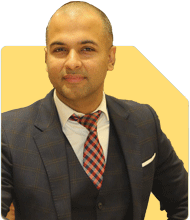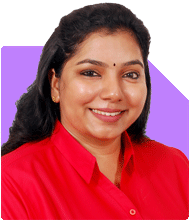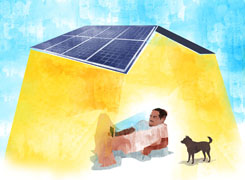63-Year-Old Retiree With 45 Lakh Investment: Will It Last?
Ramalingam Kalirajan |7478 Answers |Ask -Follow
Mutual Funds, Financial Planning Expert - Answered on Jan 09, 2025
He has an MBA in finance from the University of Madras and is a certified financial planner.
He is the director and chief financial planner at Holistic Investment, a Chennai-based firm that offers financial planning and wealth management advice.... more

my age is 63 years, I have invested in senior citizen schemes a sum of Rs.45 lakhs. having PPF of Rs.35 lakhs and further I planned a monthly income of Rs.50000 from NSC from June,2025 for a period of 5 years and it is starting from June,2025 onwards. I have a health policy for Rs.5 lakhs per year. will it sufficient for my remaining life
Strengths in Your Current Financial Setup
Senior Citizen Schemes: Rs. 45 lakhs offers safety, regular income, and assured returns.
PPF Corpus: Rs. 35 lakhs is a tax-free, secure investment for long-term needs.
Planned NSC Income: Rs. 50,000 monthly from June 2025 ensures steady cash flow for five years.
Health Policy: Rs. 5 lakh coverage supports medical needs and reduces financial strain.
Key Concerns and Areas for Improvement
Longevity Risk
Life expectancy is increasing. Funds must last for 20-25 years or more.
Assess if income from current investments can sustain inflation-adjusted expenses.
Medical Inflation
Medical costs rise at 10-12% annually.
Rs. 5 lakh health coverage may not suffice for critical illnesses or major surgeries.
Inflation Impact on Income
Senior citizen schemes and NSC returns may lose purchasing power over time.
Consider inflation-adjusted income strategies for long-term sustenance.
Limited Liquidity
A large portion is locked in PPF and senior citizen schemes.
Emergency access to funds may be restricted.
Suggestions for Financial Security
Increase Health Coverage
Enhance health coverage to Rs. 10-15 lakh per year.
Consider super top-up plans for additional coverage.
Build a Contingency Fund
Set aside Rs. 5-7 lakh for emergencies.
Use liquid mutual funds or short-term fixed deposits for easy access.
Diversify Investments
Allocate a portion to hybrid or balanced mutual funds for moderate growth.
Use Systematic Withdrawal Plans (SWP) for inflation-adjusted monthly income.
Plan for Post-NSC Income
NSC income ends in 2030.
Invest maturing NSC funds into growth-oriented mutual funds for continued income.
Manage PPF Withdrawals
PPF maturity offers tax-free withdrawals.
Plan partial withdrawals to supplement income after NSC maturity.
Regular Portfolio Reviews
Monitor fund performance and market conditions annually.
Consult a Certified Financial Planner for rebalancing.
Final Insights
Your current setup reflects thoughtful planning and disciplined investing. However, gaps in health coverage and inflation-adjusted income need attention. A diversified portfolio and enhanced health cover will secure your financial independence. Plan withdrawals wisely to sustain your lifestyle for years to come.
Best Regards,
K. Ramalingam, MBA, CFP,
Chief Financial Planner,
www.holisticinvestment.in
https://www.youtube.com/@HolisticInvestment
Best Regards,
K. Ramalingam, MBA, CFP,
Chief Financial Planner,
www.holisticinvestment.in
https://www.youtube.com/@HolisticInvestment
Best Regards,
K. Ramalingam, MBA, CFP,
Chief Financial Planner,
www.holisticinvestment.in
https://www.youtube.com/@HolisticInvestment
You may like to see similar questions and answers below
Ramalingam Kalirajan |7478 Answers |Ask -Follow
Mutual Funds, Financial Planning Expert - Answered on Jun 14, 2024
Ramalingam Kalirajan |7478 Answers |Ask -Follow
Mutual Funds, Financial Planning Expert - Answered on Jul 23, 2024
Ramalingam Kalirajan |7478 Answers |Ask -Follow
Mutual Funds, Financial Planning Expert - Answered on Sep 28, 2024
Milind Vadjikar |850 Answers |Ask -Follow
Insurance, Stocks, MF, PF Expert - Answered on Oct 28, 2024
Ramalingam Kalirajan |7478 Answers |Ask -Follow
Mutual Funds, Financial Planning Expert - Answered on Nov 05, 2024
Harsh Bharwani |69 Answers |Ask -Follow
Entrepreneurship Expert - Answered on Jan 09, 2025
Radheshyam Zanwar |1137 Answers |Ask -Follow
MHT-CET, IIT-JEE, NEET-UG Expert - Answered on Jan 09, 2025
Radheshyam Zanwar |1137 Answers |Ask -Follow
MHT-CET, IIT-JEE, NEET-UG Expert - Answered on Jan 09, 2025
Pushpa R |42 Answers |Ask -Follow
Yoga, Mindfulness Expert - Answered on Jan 09, 2025
Pushpa R |42 Answers |Ask -Follow
Yoga, Mindfulness Expert - Answered on Jan 09, 2025
Ravi Mittal |500 Answers |Ask -Follow
Dating, Relationships Expert - Answered on Jan 09, 2025
Ramalingam Kalirajan |7478 Answers |Ask -Follow
Mutual Funds, Financial Planning Expert - Answered on Jan 09, 2025
Kanchan Rai |479 Answers |Ask -Follow
Relationships Expert, Mind Coach - Answered on Jan 09, 2025
Kanchan Rai |479 Answers |Ask -Follow
Relationships Expert, Mind Coach - Answered on Jan 09, 2025
Radheshyam Zanwar |1137 Answers |Ask -Follow
MHT-CET, IIT-JEE, NEET-UG Expert - Answered on Jan 09, 2025









.jpg)


















